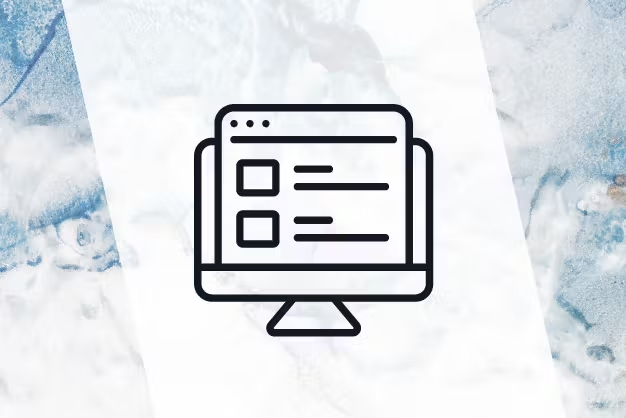Call Center Forecasting Methods & Techniques


Call center forecasting predicts future call volumes and staffing needs by analyzing historical data and identifying trends and patterns. Accurate forecasting is crucial for call centers to optimize staffing levels, control operational costs, enhance customer service, plan capacity needs, and improve workforce management strategies.
Although this process might sound challenging, most call center managers today use workforce management systems – software platforms that integrate forecasting algorithms with scheduling and monitoring tools. AI and machine learning also leverage advanced algorithms to analyze large datasets and continuously improve forecasting accuracy.
Each call center will have a different forecasting approach that works best for them, depending on their needs and data availability. If you’re wondering how to choose which methodology best fits your contact center, consider the five primary factors listed below.
What is Call Center Forecasting?
An effective call forecast strategy involves more than simply analyzing data. Managers leverage statistical modeling to infer the impact trends and patterns in call volume will have on their staffing needs. This complex mathematical element of the process is why contact centers use workforce management software and AI assistance to assist with their contact center forecasting.
Accurate call forecasting methods not only benefit staffing decisions but also enable call centers to plan for capacity and technology needs, manage operational costs more effectively, and enhance workforce management strategies, such as agent scheduling. By analyzing historical data and incorporating factors like promotional campaigns and seasonal trends, the call center can forecast spikes in demand and proactively adjust staffing levels accordingly. This ensures customers can reach the call center promptly during busy periods, improving their overall experience and potentially increasing sales or customer loyalty.
5 Considerations and Methods for Call Center Forecasting
There are several popular forecasting methods that most call centers find effective. Time-series forecasting models, such as moving averages and exponential smoothing, are employed to forecast based on historical time-series data. Regression analysis models the relationship between call volumes and independent variables like promotions or weather.
Simulation and modeling techniques utilize mathematical models and computer simulations to test different scenarios. But to get the most out of these out of these call center forecasting methods, there are five factors you must consider.
1. The Importance of Accurate Forecasting
Accurate call center forecasting is crucial for ensuring optimal staffing levels and providing efficient customer service. Here are some key reasons why it is important:
- Cost optimization: By accurately forecasting call volumes, call centers can schedule the correct number of agents to handle the expected workload. This helps avoid overstaffing, which leads to unnecessary labor costs, or understaffing, which results in long wait times and poor customer experience.
- Improved customer satisfaction: When call volumes are accurately predicted, customers are less likely to experience long hold times or abandoned calls. This leads to improved customer satisfaction and loyalty, which is essential for business success.
- Better resource allocation: Accurate forecasting allows call centers to allocate resources more effectively, such as scheduling training sessions or planning for technology upgrades during periods of lower call volumes.
- Workforce management: Precise forecasting enables call centers to develop efficient schedules, manage shift patterns, and plan for employee breaks and time-off requests, ensuring a well-organized and productive workforce.
- Contingency planning: By anticipating call volume fluctuations, call centers can prepare contingency plans to handle unexpected spikes or dips, such as implementing overflow strategies or cross-training agents.
2. Improving Call Center Volume Forecasting with Simulation Tools
Simulation tools significantly boost call center forecasting accuracy by harnessing data analytics. They analyze historical call patterns, model scenarios like promotions or product launches, and incorporate external factors like weather and economic data.
Simulation enables “what-if” analyses to test staffing and scheduling impacts. Advanced tools even monitor real-time data for automatic forecast adjustments. Overall, simulation tools empower data-driven forecasting for optimal resource allocation, service levels, and operational efficiency.
3. Forecasting Special/Difficult Days
Special event days like holidays, promotions, or major product launches often see dramatic spikes in call volumes that are difficult to predict accurately. Advanced forecasting techniques are needed to anticipate these volatile periods.
Techniques like time-series analysis of historical data from similar past events can help identify patterns and trends to base forecasts. However, adjustments are often needed to account for changing factors year-over-year. Surveys, marketing data, and social media monitoring can provide leading customer interest and demand indicators to factor into special day forecasts.
Call center managers should implement contingency buffers. They will overstaff slightly to account for a holiday or special promotion day to provide a cushion for traffic spikes above forecasted volumes. During the day itself, be sure to execute your own intraday recalculating of the actual vs. expected call volume.
4. “Intra-day” Call Forecasting
Dealing with unexpected spikes or dips in call volume can be challenging for call centers, as forecasting models may not always account for unforeseen events or circumstances. Let’s explore some tips on how call centers can handle these situations and why they may need to rely on more than call forecasting alone:
- Implement flexible staffing models: Instead of relying solely on fixed schedules, call centers should have contingency plans in place to quickly scale up or down their workforce. This could involve strategies like voluntary overtime, on-call agents, or cross-training agents to handle multiple queues.
- Leverage technology: Call centers can leverage technological solutions like automatic call distribution (ACD) systems, interactive voice response (IVR) systems, and virtual hold capabilities to efficiently manage unexpected call volumes.
- Monitor real-time data: Call centers should continuously monitor real-time call data and have systems in place to alert managers when volumes deviate significantly from forecasts. This allows for timely adjustments and resource reallocations.
- Cross-train and multi-skill agents: By cross-training agents to handle multiple types of inquiries or transactions, call centers can better distribute workloads and adapt to shifting demand patterns.
- Maintain a pool of contingent workers: A pool of trained, on-demand workers or outsourced partners can provide a flexible workforce to tap into during unexpected volume surges.
It’s important to note that while call forecasting is essential for planning and resource allocation, it cannot account for every possible scenario or unforeseen event that could impact call volumes. Events like viral social media events, holidays, or business promotions can significantly disrupt call patterns in ways that are difficult to predict accurately.
Therefore, call centers must complement their forecasting efforts with agile workforce management strategies, real-time monitoring, and contingency plans to effectively manage unexpected call volume fluctuations.
5. Forecasting for Multiple Channels
Call center forecasting is a crucial component of efficient workforce management and resource planning in modern customer service operations. As businesses strive to provide seamless and omnichannel customer experiences, accurately forecasting demand across various channels becomes increasingly important, including phone calls, chat messages, social media, and others.
In today’s marketplace, customers increasingly use multiple channels to interact with businesses and call center forecasting enables effective workforce planning across varying media. Agents can be cross-trained to handle different channels like chat, social media, and phone, and their schedules can be optimized to accommodate fluctuations in demand across these channels as well.
Learn More About Forecasting for the Contact Center
Contact centers must not undervalue the importance of call center forecasting. Whether it’s maintaining consistent customer coverage, accounting for spikes in traffic volume, or accommodating customers on their omnichannel journey, using proper call forecasting is essential.
Savvy contact centers know better than to leave their forecasting in the hands of management via archaic tactics like manual calculation. They rely on statistical modeling, calculation tools, and workforce management software applications to ensure their call center is adequately staffed and customers receive the right care.
Verint is a leader in the customer service-as-a-service (CSaaS) industry. Our workforce management platform leverages AI to optimize your scheduling and manage staffing costs. Contact our team today to schedule a demo and discover how Verint can transform your customer relationships.